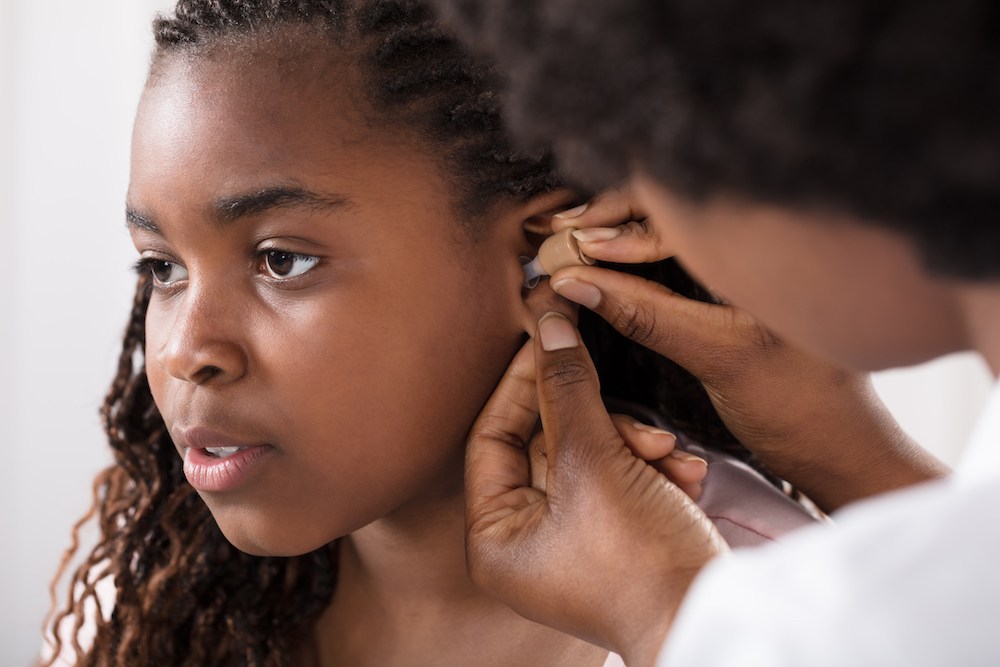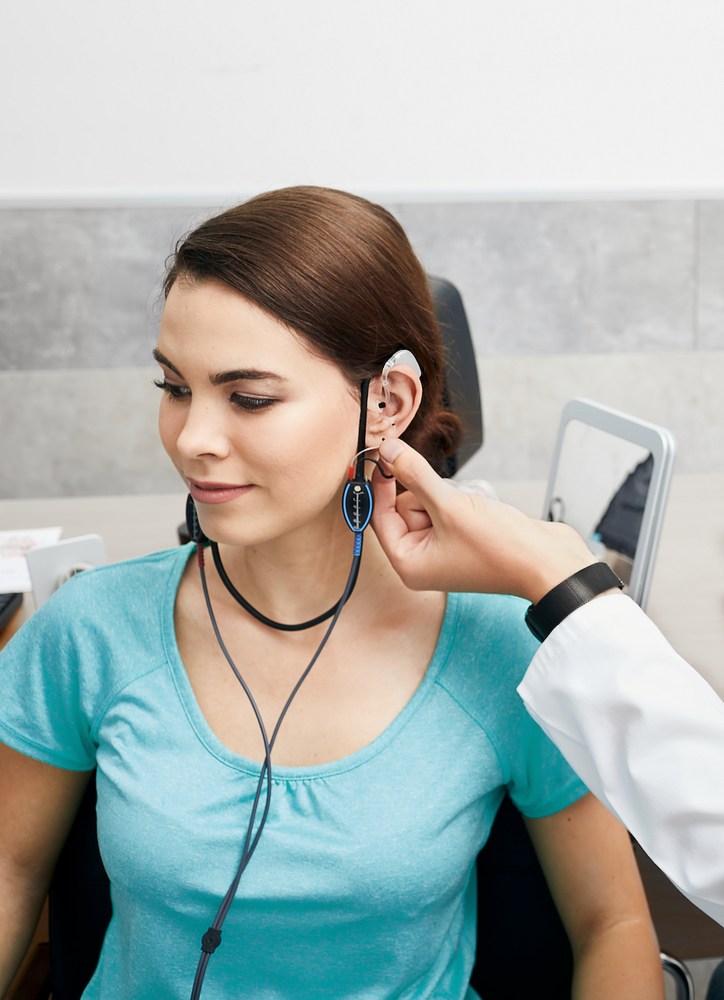The Role of Hearing Aids in Virtual Meetings
Virtual meetings have become a regular part of work and social life for

By: admin | March 21, 2025
Children explore and learn about their world largely through what they hear. From picking up language by listening to family conversations to developing social skills through interactions with others, good hearing plays a crucial role in a child’s development. Yet unlike vision problems, which children might notice and report, hearing issues can be difficult to identify in young kids.
Many children with hearing difficulties don’t realize their experience differs from others. They may adapt naturally to hearing less, making it hard for parents and teachers to spot potential problems. A child might seem inattentive or uncooperative when actually they simply can’t hear instructions clearly. This is why regular hearing tests are an essential part of childhood healthcare.
With simple preparation, your child’s first hearing test can be a smooth and even interesting experience. When children know what to expect and feel at ease during their assessment, healthcare providers can gather better information – and you’ll have peace of mind knowing you’re supporting your child’s communication development and overall well-being.
Recognizing signs of hearing loss in children can vary depending on their age and stage of development. In infants, early indicators may include a lack of response to loud noises, an absence of startle reflexes or limited reactions to familiar voices. Babies with typical hearing often turn their heads toward sounds, respond to their caregivers’ voices and begin babbling by a few months old. If a baby does not coo, babble or show interest in vocal interactions, it could be a sign of hearing difficulties. Another key milestone to watch for is whether the child begins imitating sounds and developing speech around six to twelve months. A lack of these early vocalizations may indicate a need for further evaluation.
As children grow into toddlers and preschoolers, signs of hearing loss may become more noticeable in their speech and language development. A child who struggles to form words, has difficulty following simple directions or frequently asks for things to be repeated may not be hearing speech clearly. Some children may rely more on visual cues or gestures instead of spoken communication, which can be another clue. They may also have trouble identifying where sounds are coming from or seem inattentive, particularly in group settings or noisy environments. At this stage, delays in speech development compared to peers can be a significant sign that their hearing should be checked.
In school-aged children and adolescents, hearing difficulties can sometimes be mistaken for inattention or learning challenges. They may have trouble understanding teachers, especially in noisy classrooms and might frequently misunderstand spoken instructions. Some children develop coping mechanisms, such as lip-reading or watching others for cues, which can mask hearing difficulties for a time. Complaints about people mumbling, turning the volume up excessively on electronic devices or withdrawing from conversations and social interactions can also signal hearing issues. As children get older, these challenges can impact their academic performance and confidence, making early identification and support essential.
Hearing tests for children typically begin shortly after birth to ensure early detection of any hearing issues. Newborn hearing screenings are standard in most hospitals and are usually conducted within the first 24-48 hours of life. This test is quick and painless, usually involving a small sensor placed on the baby’s head to measure how sound travels through the ear. If a baby doesn’t pass the initial screening, they will be referred for further testing, often within the first few weeks or months, to confirm the results and determine if there is any hearing loss.
As children grow, additional hearing tests are often performed during regular pediatric visits. For example, hearing is typically assessed around the age of four or five, especially before a child starts school. This is to ensure that their hearing is functioning properly as they begin developing more complex language and communication skills. If there are concerns from parents, caregivers or teachers about speech delays or the child’s ability to follow verbal instructions, a hearing test may be recommended at any point during the preschool years.
For older children and adolescents, hearing tests are often done in school as part of routine screenings, particularly in kindergarten and again in later grades. However, if there are signs of hearing issues – such as difficulty understanding speech, asking for repetition or turning up the volume on devices – parents and teachers may request additional evaluations. As children enter adolescence, hearing tests may also be prompted by exposure to loud environments, like concerts or prolonged headphone use, which can increase the risk of noise-induced hearing loss. In these cases, periodic hearing screenings are advised to monitor for any changes in hearing ability and to prevent further damage.
Knowing what to expect during your child’s hearing test can help ease any concerns you may have, as the process is designed to be as comfortable and straightforward as possible. For newborns, the hearing test typically involves a non-invasive procedure called otoacoustic emissions (OAE) or an auditory brainstem response (ABR) test. In an OAE test, a small probe is placed in the baby’s ear to measure the sounds emitted by the inner ear in response to sounds. The ABR test is a bit more involved, with electrodes placed on the baby’s scalp to track brainwave responses to sound stimuli.
As children grow, hearing tests become more interactive, allowing specialists to assess their hearing in a way that aligns with their developmental stage. For toddlers and preschoolers, the hearing test usually involves a game-like approach to encourage participation. One common method is called conditioned play audiometry, where a child is asked to perform a simple action – like placing a block in a box – every time they hear a sound through headphones. The hearing specialist will then present various tones at different volumes and frequencies, checking for the child’s response to soft, mid-range and high-pitched sounds.
For older children, including school-aged children and adolescents, the test becomes more similar to those done for adults. Pure-tone audiometry is commonly used, where the child wears headphones and listens to different pitches and volumes, indicating when they hear a sound by raising their hand or pressing a button. In some cases, the child may also undergo speech audiometry, where they repeat words or sentences they hear through the headphones to assess their ability to understand speech at various volumes. If the child has difficulty understanding speech or hearing in noisy environments, additional tests may be conducted to assess how well they process sounds in everyday situations.
When potential hearing loss is identified early in a child’s life, it allows for a tailored intervention plan to be put into action. Hearing specialists can recommend specific tools, therapies or strategies that are suited to your child’s needs. These interventions could include hearing aids, speech therapy or specialized educational support. The goal is to provide your child with the resources they need to communicate and interact with the world effectively. Just like nurturing a plant with proper care helps it thrive, early intervention helps to nurture and strengthen your child’s auditory development, setting them up for a successful future.
Early detection isn’t only about finding immediate solutions. It’s also about ensuring long-term management of your child’s auditory health. With early identification, hearing specialists can monitor your child’s progress over time, making timely adjustments to their care plan as needed. This proactive approach helps prevent minor issues from developing into more complex challenges. By staying ahead of potential difficulties, it ensures your child is consistently on the right path toward maintaining optimal hearing health as they grow.
Taking these proactive steps doesn’t just benefit your child’s auditory development – it also provides peace of mind for parents. Knowing that you’re actively supporting your child’s well-being and creating an environment that encourages their growth can reduce stress and uncertainty. Early detection and intervention help both the child and the family feel confident in their ability to address any hearing challenges that may arise, ultimately empowering the entire family to focus on the future with reassurance.
Hearing aids are one of the most common treatments for childhood hearing loss. These small devices help amplify sounds, making it easier for children to hear and understand speech and other important sounds in their environment. Depending on the severity of the hearing loss, a hearing aid can be customized to meet the specific needs of a child. These devices are typically worn behind or inside the ear and can be adjusted as the child’s hearing needs change over time. With proper fitting and regular follow-ups, hearing aids can significantly improve a child’s ability to communicate and interact with others.
For children with hearing loss, wearing hearing aids helps them develop important skills, like speech and language, by ensuring they can hear sounds clearly. Early use of hearing aids, combined with support like speech therapy, can help children keep up with their peers in school and social settings. It’s important for parents to work closely with hearing specialists to find the right hearing aid and ensure it’s properly adjusted as the child grows. When used consistently, hearing aids can make a big difference in a child’s development, helping them lead a more confident and independent life.
Recognizing hearing issues early can make a significant difference in a child’s growth and learning. Since children often don’t realize their hearing may be different, it’s crucial for parents and caregivers to be aware of the signs and ensure regular hearing tests are part of their healthcare routine. Early detection and intervention open up the possibility for more effective treatment and support, like hearing aids or speech therapy.
The earlier hearing loss is addressed, the better the chance for your child to develop essential skills and gain confidence. With the right support, children can grow into capable, independent individuals who can fully engage with the world around them. At Conn Hearing, our team is well-versed in addressing hearing loss issues. Our Jeffersonville, IN location is fully equipped to provide quality care. Just give us a call at (812) 561-2011 and we’ll take care of your hearing health needs.
Tags: hearing tests for children, prepare for hearing tests, speech tests

Virtual meetings have become a regular part of work and social life for
By: admin | November 18, 2025

When you arrive for a hearing evaluation, you naturally expect the results
By: admin | September 24, 2025

When hearing becomes difficult, it affects more than just conversations.
By: admin | May 23, 2025